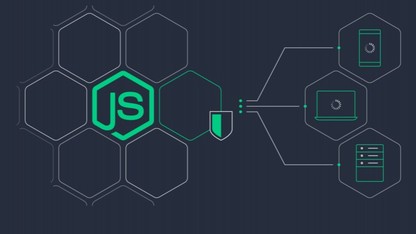How to Build a User-Friendly E-Learning Website: Development Stages and Tips
.png)
The global e-learning market is expected to reach $457.8 billion in 2026, which is nearly double its current size. It is a signal to all people — e-learning is a trend.
Learning through digital resources is a flexible, time-efficient, and convenient way to gain new skills and advance your career. Here are some examples of popular e-learning platforms you most likely have heard about:
- Coursera
- Duolingo
- Moodle
- Udemy
- Skillshare.
These projects succeeded because of their strong communities, meaningful content, and well-thought-out customer policies. However, they do not cover the entire market, and there are still spots for new platforms.
Let’s review the stages of creating a popular educational platform. Below you can also find some tips on making e-learning web resources as customer-centered and user-friendly as possible — so be sure to make it to the end of this post.
Why an Online Education Website Is a Lucrative Idea
Decades ago, the prevalent method to learn skills and gain knowledge was through personal attendance. Individuals still study in colleges and universities, but it is no longer the only study option that is viable.
Today, e-learning is a tool for going beyond the conventional education process. Over three-quarters of universities have established distance learning programs since the pandemic that started in 2020. Moreover, about 90% of companies worldwide plan to implement e-learning in their working processes. It will complement the raised popularity of remote work formats.
While companies are willing to pay for corporate subscriptions, individual customers tend to purchase the courses they like one by one. Both groups of buyers increase in their number gradually over time. So, the demand for e-learning platforms is already huge and is predicted to surge even higher.
Let’s take the Coursera platform as an example. It granted free access to its courses to students during the pandemic. Still, its revenue increased by 41% and amounted to $415 million in 2021. It means that more and more new users are willing to pay for subscriptions.
Stages of Creating a Successful E-Learning Platform
E-learning website development comprises six stages, from the formulation of an early idea to technical support and maintenance of a fully-fledged platform.
Idea Creation
The primary goal is to create a unique market offer for potential customers. For this purpose, you need to determine a problem your prospect users are struggling with. The solution to their issue would be your early idea for an e-learning platform.
You can visit rival websites, try their functionality, read reviews, and determine their target groups. Perhaps you will find competitor platforms unsuitable, for example, for children, or on the opposite, for the elderly. This way, you will get an initial understanding of what customers may be lacking.
Get a brainstorming session going with your colleagues, business partners, or friends. This method helps come up with viable ideas.
Market Analysis
You can proceed to market analysis once a basic concept is established. It includes the following steps:
- Market research. It may include reviewing value-of-service and potential cost-of-service pricing. These indicators help you to find out if customers are willing to pay your service cost based on its value proposition. Another good idea is to conduct a PEST analysis and determine if political, social, economic, and technological factors benefit your project. Such research methods will provide you with an accurate picture of the potential return on investment.
- Audience analysis. This means determining the characteristics of potential customers. It includes reviewing age groups, user needs, expectations, interests, etc. Audience analysis will help you create a customer-centered platform and run effective marketing campaigns.
- Competitors analysis. The strengths, weaknesses, opportunities, and threats (SWOT) methodology is a solid example of this form of analysis. It will help you determine your competitors' major limitations and advantages that you should consider during development.
The market analysis phase is similar to the previous one but more data-centered.
Platform Design
Design is a crucial aspect of software development as it defines the quality of user experience on your platform. Successful e-learning platforms are known for the intuitiveness of their interfaces, ease of log-in and subscribing, and comfortable navigation. So, creating a UI that includes colors, font, elements, and interactions is recommended.
Moreover, users tend to access education websites via different devices. So it is worth investing in design responsiveness to make your platform both mobile and desktop-friendly.
MVP Development
A minimal viable product (MVP) is simply an early version of your e-learning platform, with only primary functionality and basic design. The objective of such a prototype is to test the viability of your project by receiving user feedback. You may detect the following problems by releasing an MVP:
- The idea is not appealing to potential customers.
- Some functions are obsolete or, on the opposite, lacking.
- The target audience was not determined correctly.
- The early design concepts are not user-friendly.
Developing and releasing an MVP is a cost-effective decision. It will guide your further development and will help avoid severe mistakes. Besides, you may run a marketing campaign focused on your MVP to gain more attention from customers and even pre-sell subscriptions at an attractive price.
MVP development is not an obligatory stage. However, it will drastically increase your platform’s chances of success.
Testing
Testing enhances the overall quality of the finished platform. Here’s how testing can benefit your project:
- Determine functionality issues such as the impossibility to create a course page because there is no template creation feature.
- Uncover technical issues such as slow page loading.
- Reveal design issues such as unreadable text because of wrong color choice.
- Get some extra feedback from testers to consider before the final release.
It is up to you to decide how long it will take and what types of testers to hire. You may use your dev team as in-house testers, hire outsourcing specialists, and even release a demo version of your product and gather user feedback.
Launch and Maintenance
You naturally want your platform to attract a large number of users at launch. But experience shows that it is possible only in some cases.
One specific example is when you offer stand-alone value compared to competitors. Alternatively, you may start as an industry niche, offering your services to a particular group of customers. In both situations, you enter a low competition market, and all that’s left is to let clients know about your services. A proper marketing campaign may help you gather more customers in the early days of the project.
You will still need to perform technical support and maintenance after the e-learning platform is launched. It also includes releasing updates on a regular basis. A good idea is to hire outsourcing specialists to take care of support and maintenance.
10 Tips on How to Make Your Platform User-Friendly
User-friendliness is essential when you build an e-learning website. After all, customers expect your services to be both useful and somewhat entertaining to make them return again and again.
Here are the top 10 tips on how to create a user-friendly platform for e-learning.
Determine Platform Type
Here is the list of conventional options and their specificities:
- Learning Destination Sites
This type is a shared website where tutors from around the globe offer their courses. From a certain perspective, learning destination sites are retail shops with the support of an authoring tool and e-learning management system. They gather digital products and handle the eCommerce aspect. Coursera and Udemy are examples of such platforms.
- Traditional Commercial Learning Management Systems (LMS)
Such platforms provide course creators with basic e-learning instruments and host their digital products. Tutors can develop and author courses, manage profiles, report students’ grades and progress, etc. Schoology and Blackboard Learn are examples of such platforms.
- Modern LMS
The modified versions of conventional LMS focus on students’ learning experience. They incorporate specific pedagogies and go beyond traditional approaches to education. Totara, NovoEd, and Docebo are examples of such platforms.
- Learning Management Ecosystems
These are combinations of multiple e-learning tools and solutions designed to look like a uniform system. One of the vivid examples is the NeXus platform by the University of Notre Dame.
- Open-Source Learning Management Systems
Such platforms are much like traditional commercial LMS with nearly the same functionality included. The main difference is that open-source sites host courses charge-free. Moodle and Sakai are examples of such platforms.
- Custom-Built Platforms
These solutions focus on serving a particular business and are typically intended for a single company’s course. An example is Harvard Business School’s platform for e-learning — HBX.
Choosing a platform type means deciding on your platform’s main concept.
Get the Features Right
Every e-learning platform is a unique digital solution with diverse features. But some must-have functionalities to consider integrating are the following:
- Registration and login authentication. Your platform will benefit from offering users to create customer profiles. This option requires built-in registration and authentication.
- Search option. Users must be able to search for desired courses on the website by name, keyword, author, etc.
- Clear instructions and reminders. Use tooltips and pop-up notifications to propose guides and introduce new functions.
- Dashboard. This feature helps learners manage their current courses and progress. Having all information in the same place is convenient for both students and teachers.
- Analytics and improvement reports. Such functions allow users to measure their progress and set educational goals for the future.
- Payment system. This enables customers to pay for courses so you can monetize your project.
You should look for other useful features to integrate into your website, but these should be the core of your platform.
Use Familiar Navigation
Your platform should not copy other web resources, but it’s a good idea to stick to conventional design practices while structuring your website.
There are three components of navigation that help your digital resource be understandable.
- Main navigation. It divides all the website content, thousands of pages, into grouped subcategories. For example, business courses, language courses, cooking courses, etc.
- Local navigation. It comprises all the pages that fall within a specific subcategory. For example, language courses can be divided into English, French, and German courses.
- Contextual natigation. It is the links that lead to other website pages but the one being viewed to complement it with relevant content. Examples are “read more,” “back,” and “next” buttons converted to a link.
It is also important to keep the concept of familiar navigation in mind when creating a UI kit. It should include conventional arrows, clearly labeled buttons that would help users surf the platform, and so on.
Avoid Text Overload
Users find it difficult to understand large blocks of plain text. You may consider diversifying your page content with the following elements to make it easy to digest:
- Short bursts of text that are to the point.
- Bullet lists to structure essential information.
- Tables for providing technical data or comparing, for example, subscription options.
- Visual material such as pictures, videos, graphs, etc., wherever appropriate.
- Hyperlinks that introduce extra information without distracting from the main point.
Using these and other instruments, you will make your website content more engaging. It will also make finding a course and completing its lessons easier.
Use Guides and Tutorials
Users come to your platform to receive knowledge, so they won’t mind extra instructions on how to use your web resource. Instead, they can learn the full functionality of your e-learning site with the help of provided tips. This will increase engagement, reduce possible misunderstandings, and enhance the overall customer experience.
At the same time, tutors may require extensive guides and tutorials on developing courses using your platform’s instruments. So, you improve your content by instructing your users.
It is important to remember that not everyone needs assistance. So let users decide for themselves whether and when to read your guides or not.
Offer Microlearning
Microlearning is an educational approach that features brief learning units and short-term activities. Such bits of knowledge fit the users’ schedules well and are easy to digest. They prevent cognitive overload and prompt customers to visit your platform more often.
Examples of microlearning activities include videos, pictures, quizzes, educational puzzles, infographics, short videos, and so on. Your platform’s tutors may create interactive lessons or just bits of text that are interesting to read.
Add Visualization and Video Content
A great idea is to add visual materials to your website content. This way, it will have a much better chance to interest learners and engage them to use the platform more. Use interactive elements on your platform, such as clickable forms and buttons, animated icons, and so on. But don’t add too much dynamic content because it can disorient users.
You should also provide tutors with instruments to add their pieces of video content. Most course creators specifically use this form to deliver educational services. So having such options, they will be more interested in using your platform.
Moreover, students absorb information way better if it has some form of visualization. For example, presentations and infographics show more efficiency than pieces of plain text.
Incorporate Gamification
Gamification is a valuable approach to online education you may integrate when building an e-learning platform. Gamified learning concept includes such elements:
- Storylines. It is the right call to create a plot that would immerse users into a virtual environment. It helps to make the user more engaged in a process and creates an emotional connection with the story. Storylines also serve as the basis for other gamification elements in e-learning.
- Challenges. You can make the learning process more fun by gradually increasing the difficulty of each subsequent task, making it a challenge to reach a certain level. I will help users advance their knowledge while enjoying the gaming process.
- Competition and rewards. You may reward users with unique avatars or emojis for successfully completing tasks. It is also great to integrate a leaderboard function to make your gamified learning more competitive.
A vivid example of such an educational game is the timed quiz by Open University.
Virtual Classroom
Virtual classrooms are dynamic learning environments. Your course creators can present pre-recorded materials in real-time there.
After the recent pandemic, virtual classrooms have become a sort of salvation for educational institutions. But e-learning platforms had incorporated video conferencing tools years before. The reason is that online conferences offer flexibility in online learning. They also increase collaboration between tutors and students and enable personalized education delivery.
Storing and selling courses is one way to monetize your project. But offering students to connect with their tutors via your platform is also a great option to consider adding.
Gather Feedback
Even after your platform is already successful, never stop gathering user feedback. Such data enables advanced analytics of your project’s performance and shows areas of improvement.
Here’re the ways to gather feedback:
- Website surveys
- Email surveys
- Phone surveys
- Google Forms or any other third-party platform
- Directly asking your social media followers
It is also a good idea to run focus groups for qualitative research. A planned discussion with your target audience’s representatives helps to understand issues associated with e-learning better.
Online Education — A Promising Niche
E-learning is one of the rapidly expanding market niches. Do not let well-established competitors make you abandon the idea of creating your own platform. Conduct prior market research and make sure you offer stand-alone value or a unique experience to your prospective customers. You might also consider going the MVP road to increase your chances of success.
Pay attention to the changing needs and preferences of users and recent technological advancements. Here are some trends to consider while building your platform:
- Mobile learning — development of mobile apps for e-learning platforms;
- Implementation of gamification;
- Social learning — delivery of online education across social media channels;
- Microlearning;
- High level of content visualization.
If approached wisely, developing an e-learning platform is a highly promising investment project.



